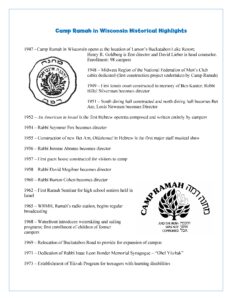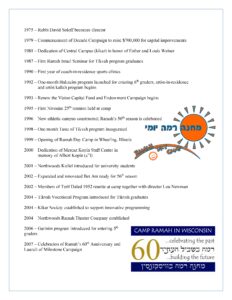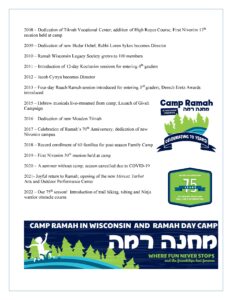Please enjoy a D’var Torah this week from Professor Robin Judd, who will join us again as one of our scholars-in-residence this summer. Robin is an Associate Professor in the Department of History at the Ohio State University, where she has served as the Chair of Graduate Studies. Among other interests, her scholarship has focused on interesting touchpoints for Jewish and European culture in the modern period. Robin lives in Columbus with her husband, Dr. Kenny Steinman, and their two sons, Jesse and Gavi.
Parshat Terumah
Professor Robin Judd
The transition from Parshat Mishpatim to Parshat Terumah can be jarring. Last Shabbat morning, we shivered as we remembered the revelation at Sinai. This week, we slog through detailed, arcane blueprints for building a Mishkan. God does not initiate this construction to improve the Israelites’ math skills. Instead, this tabernacle will serve as the symbol of God’s continued presence. It will be the space for religion to be practiced and made uniform.
Despite the importance of the task at hand, I often wonder whether we must move away from revelation so quickly and with such little fan fare. How can we seamlessly shift from consuming fire to cloth? From clouds of smoke to metals? From intense drama to collecting materials for the tabernacle’s construction? We move from Moshe entering a cloud of smoke to seven subsections of detailed mathematical formulas. Must we really do the intellectual gymnastics required to build a tabernacle so soon after the drama of the previous parsha? How do we reconcile this uncomfortable binary?
True, the juxtaposition of revelation’s drama with the exhaustive detail of the Mishkan’s blueprint may be unsettling, but the uneven pairing is meaningful. In fact, the term “terumah” can give us a hint as to why the strange binary is so significant.
The term, “terumah,” often (mistakenly) defined as a gift or offering, comes from two separate roots: “elevate” and “separate.” Commentators often explain that the contributions the Israelites gave toward the Mishkan were not simply the materials needed for construction. Rather, when the Israelites separated themselves from their precious metals and cloths, they elevated those possessions into something holy.
I find that explanation useful when we think about the importance of charity. However, as I see it, the integration of these two distinct notions of “separate” and “elevate,” share the same instructions offered by the blending of the passion of revelation (elevation) and the celestial blueprint of the Mishkan (separation). The juxtaposition reminds me that spiritual fulfillment often rests on the blending of an emotive, powerful presence with controlled, measured, practice and thought. Moreover, such an exercise can be successful only if the community undertakes it. We need everyone to contribute his or her precious gifts to help sustain a holy space.
I have been deeply moved by how the spiritual, intellectual, and communal come together at Camp Ramah (a term that not surprisingly shares the root “elevate” with Terumah). When I am a scholar-in-residence, I eagerly look forward to late Friday afternoons. As soon as my classes end and I have showered and changed into my Shabbat clothes, my younger son and I begin to make our way around camp. We watch campers move in neat patterns. They shift from small groups of two or three to larger clusters of five or six, eventually making their way into a circle of bunkmates. After a short amount of time, each of those circles then moves to merge with other circles, coming together to create a larger cluster of campers from a single eidah. Each eidah-cluster then moves as a group to the kikar where it joins with the other eidot to create one enormous holy kehillah that will take part in Kabbalat Shabbat together. Each cluster moves at its own pace, embarks on its own set of rituals, and contributes its own precious gifts until it becomes one. Just as the Mishkan was intended to be mobile, so too is our spiritual community. For me, Friday afternoons at camp offer deep spiritual fulfillment exactly because they blend together the singular with the communal, the elevation with separation, drama with practice, revelation with a blueprint.
May you experience a Shabbat that is elevated and separated from the day to day of your work or school week. Shabbat Shalom.





